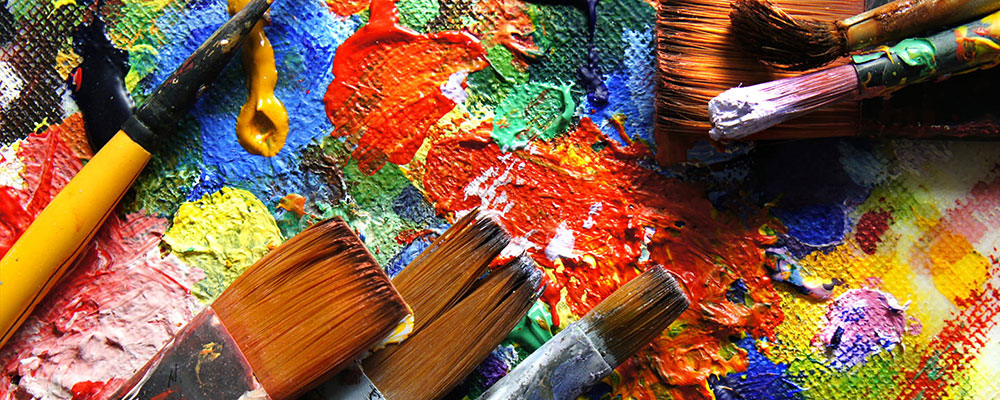
Exploring the Rich Tapestry of Visual Arts
Visual arts encompass a vast and diverse array of creative expressions that captivate, inspire, and challenge our perceptions. From ancient cave paintings to contemporary digital installations, the world of visual arts is a dynamic realm that reflects the ever-evolving nature of human imagination and creativity. In this article, we will delve into the multifaceted landscape of visual arts, exploring its history, various forms, and the profound impact it has on society.
The Evolution of Visual Arts
Prehistoric Art: From Cave Walls to Petroglyphs
Visual arts find their roots in prehistoric times, where our ancestors expressed themselves through cave paintings and petroglyphs. These early forms of art not only served as a means of communication but also offered insights into the spiritual and cultural beliefs of ancient civilizations.
Classical Art: The Renaissance and Beyond
The Renaissance marked a pivotal moment in the history of visual arts, ushering in a period of immense creativity and innovation. Artists like Leonardo da Vinci, Michelangelo, and Raphael produced masterpieces that showcased a profound understanding of anatomy, perspective, and the human condition. This classical era laid the foundation for centuries of artistic exploration and experimentation.
Modernism: Breaking Tradition and Embracing Abstraction
The late 19th and early 20th centuries witnessed the rise of modernism, challenging traditional artistic conventions. Artists like Pablo Picasso and Wassily Kandinsky embraced abstraction, pushing the boundaries of visual representation. This period marked a departure from realistic depictions, encouraging artists to explore emotions, symbolism, and subjective experiences.
Painting: The Canvas of Expression
Painting is perhaps the most traditional and well-known form of visual art. Artists use various mediums, such as oil, acrylics, watercolors, and mixed media, to create rich and expressive works. From the detailed portraits of the Renaissance to the bold strokes of abstract expressionism, painting continues to be a powerful mode of artistic expression.
Sculpture: Giving Form to Imagination
Sculpture transforms raw materials into three-dimensional works of art. Whether carved from stone, cast in bronze, or assembled from found objects, sculptures engage viewers by occupying physical space. From the timeless beauty of ancient Greek sculptures to the avant-garde creations of contemporary artists, sculpture has evolved as a dynamic and tactile form of expression.
Photography: Capturing Moments in Time
With the invention of the camera, photography emerged as a groundbreaking form of visual art. Photographers capture moments in time, telling stories through images. From the poignant documentary work of Dorothea Lange to the surreal compositions of Salvador Dalí, photography has become a versatile medium that transcends traditional boundaries.
Digital Art: Where Technology Meets Creativity
The advent of digital technology has given rise to an entirely new realm of artistic possibilities. Digital art encompasses a wide range of forms, including digital painting, 3D modeling, and interactive installations. Artists like Yayoi Kusama and Olafur Eliasson push the boundaries of traditional art, engaging audiences in immersive and thought-provoking experiences.
Impact on Society and Culture
Cultural Reflection: Mirroring Society's Values and Challenges
Visual arts serve as a mirror reflecting the values, beliefs, and challenges of society. Through the ages, artists have addressed social issues, political unrest, and cultural shifts in their works. From the political satire of Francisco Goya to the social commentary of Banksy, visual artists contribute to shaping public discourse.
Emotional Impact: Eliciting Feelings and Stirring the Soul
Art has a profound impact on human emotions, capable of eliciting joy, sadness, awe, or introspection. Whether it's the serene landscapes of the Hudson River School or the visceral intensity of Edvard Munch's "The Scream," visual art has the power to evoke a wide range of emotions, creating a deep and personal connection between the artwork and the viewer.
Innovation and Inspiration: Fueling Creativity Across Disciplines
Visual arts have a symbiotic relationship with other creative disciplines. The design of everyday objects, the aesthetics of architecture, and the visual storytelling in film and animation all draw inspiration from the world of visual arts. The cross-pollination of ideas across different creative fields fosters innovation and pushes the boundaries of what is possible.
Conclusion
In conclusion, visual arts stand as a testament to the boundless creativity of the human mind. From the earliest cave paintings to the cutting-edge digital installations of today, visual arts have evolved, adapted, and thrived. The diverse forms of visual arts, their impact on society, and their ability to transcend cultural and temporal boundaries make them an integral and enduring aspect of the human experience. As we continue to explore and appreciate the richness of visual arts, we embark on a journey of discovery, connecting with the profound expressions of our shared humanity.
Categories

Tag Cloud
In the heart of the music scene, where the pulsating rhythm of guitars meets the thunderous beats of drums, lies the much-anticipated event – Rock Overdose Fest.